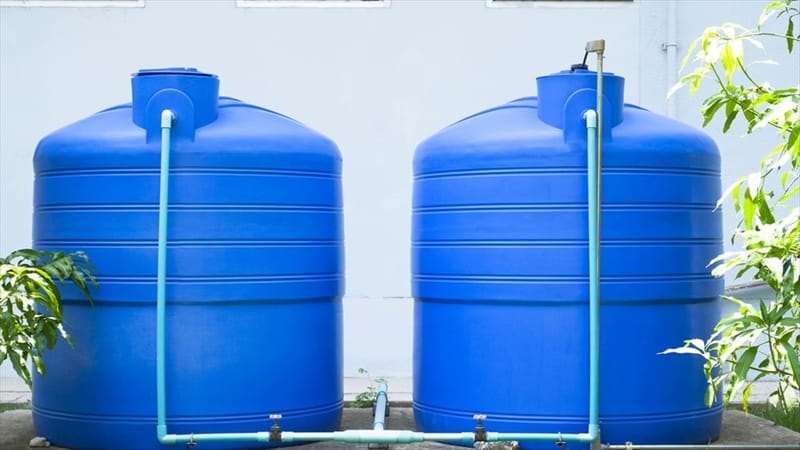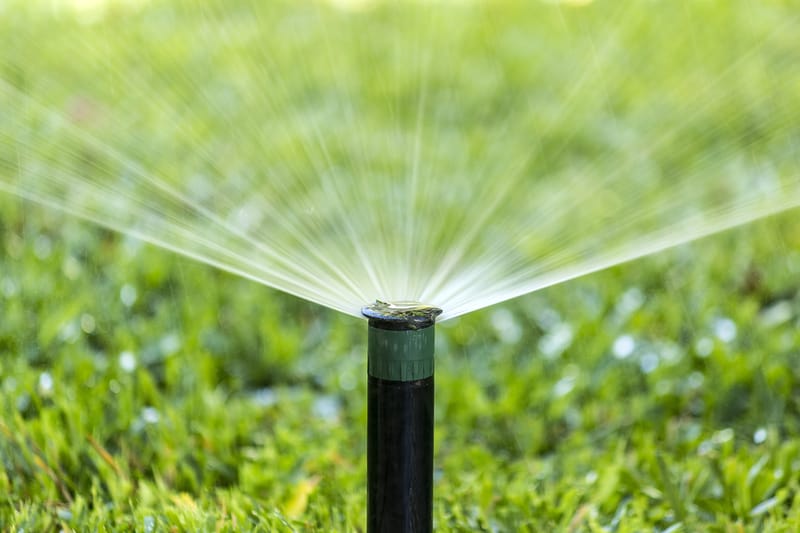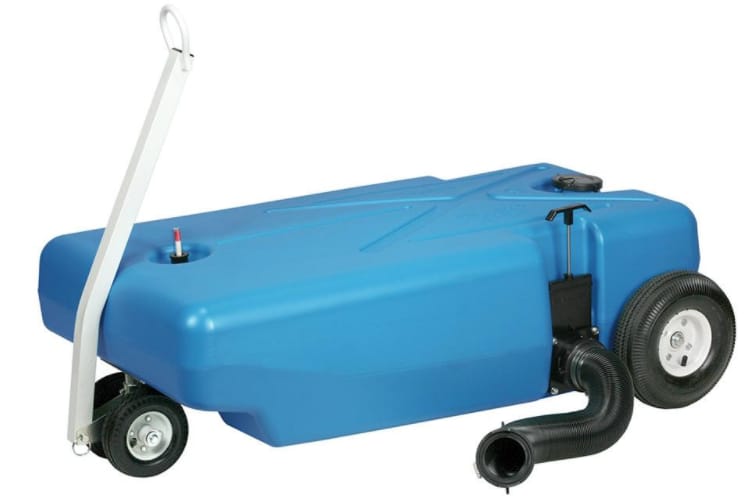Water is a precious resource that we ought to care about, and lowering our water consumption can have a lot of benefits for the world. However, that doesn’t just mean you should cut your consumption of this resource, but while that is a great step, you can also look at possibly reusing some of the water for other purposes.
Applying a grey water system is a great way to contribute to water conservation and make sure that this earth lives another day. It is also an easy initiative you can make in your efforts to liver a little bit more green.
What is Grey Water?

Maybe you have heard of grey water before, maybe you haven’t. If you haven’t then this is the waste water from your various sinks, tubs, showers and more in your home. This water has basically been used slightly, although it can still be used for a lot of things. It’s important to make the distinction between grey water and black water. Black water comes from the toilet and has been infected with fecal matter and should not be used for other purposes in your home.
There are other things you can do to use less water in the toilet, which includes fixing a running toilet and getting one that uses less water.
Since grey water comes from sinks and other venues, it will contain a mixture of food traces, hair, chemical products and more, although not being nearly as dirty as black water. It can be used for irrigation, thereby lowering your overall water consumption assuming you currently water your lawn. Using it for your toilets can also save as much as 6,000 gallons of water per year. Some of the things that the grey water will contain can even act as fertilizer.
If you choose to use the grey water for irrigation, there are however products you should try to avoid. Check out this article on the different adjustments you should consider making for the sake of you keeping a beautiful lawn. You should try avoiding flushing things that have high salt contents, boron and bleach. The article we linked to has recommendations on other products you can use instead.
With a grey water system, you’ll not just be helping to lower your bill and thereby saving you money, you will also help lessen the impact on nearby bodies of water, the water treatment facility. Although your plants might appreciate some of the waste products in the water, the sewer system won’t mind less waste being flushed out through it.
While you may not want to use greywater to irrigate your vegetable garden, it can safely be used for other trees and plants that you do not plan on consuming. The risk of contamination is too great, especially with vegetables that you eat raw.
Grey Water Recycling
You should remember that this water is not safe for drinking, and you wouldn’t use it to shower either. It is better used for plants and flushing toilets. Depending on the purpose you wish to use the grey water for, there are different treatment possibilities.
When you need to feed the plants with this water, you do not need to treat it, but to ensure that the bacteria do not have unlimited opportunities for breeding in the organic matter filled water, you ought to use it fairly rapidly. Given the right conditions, bacteria multiply quickly and when that happens, it may no longer be suitable for watering your lawn. In addition, the increased amount of bacteria in the water will also start causing the water to smell bad.
The water can be tunneled directly from the source, the sink or bath, to the outdoor where you will be using it.
Grey water with food waste in it needs to be anaerobically treated which it will have to go through a septic tank for.
Filtering water without food debrish is usually done through a sand filter, which enables it to remove large particles in the water very easily.
The water you use to flush the toilet with does not need any filtering as it is purely a mechanical solution of making sure that the water goes directly from the sink into the toilet instead of going into the sewer.
What Can It Be Used For?

While toilet flushing and irrigation is generally what grey water is used for, you will need to think about the amounts you collect as well as its quality to find the appropriate use for it. As we already mentioned, trees and plants can use it, but you probably shouldn’t use it for a vegetable garden. There are some guidelines you should familiarize yourself with, and you can even get this book on the topic.
- When you use it to water the lawn, you should do so directly and not let it pass through the expensive irrigation system you had installed.
- Don’t use it for vegetables that are commonly consumed raw.
- It is better to use it on older plants that are a little bit more resilient than young ones.
- Since there will naturally be some sodium content in the grey water from your kitchen sink and other salt sources, it’s best that you do not spread it on one specific area but that you spread it over a larger area instead, so no salt salt concentrations occur. If the water contains a good amount of salt, you should switch between grey water and fresh water without salt so as to avoid the plants being exposed to too much salt.
- Some plants will prefer soil that is heavier in acid. Since soap is the opposite, you will want to avoid using it on those plants since the soap changes the pH value of the water.
- Use it only on flat surfaces so as to minimize runoff.
- When you use grey water for the toilet, it needs to go directly into the toilet rather than into the tank, as a low water pressure could mean the water would be pulled back into the fresh water system and contaminate it.
- Grey water is great for helping the growth of algae in ponds.
- A lot of the water can also be used in the process of washing clothes, although it is obviously not good to wash clothes with very greasy water.
- The water that will be used for irrigation should not contain fabric softener or detergent, instead you can use this kind of soap.
Systems for Homes

Reducing your ecological footprint can feel great and it does not need to be hard. Imagine if you could simply use the water that has already been used and then use it again for the toilet. The amount of water that will need to be municipally treated is significantly lowered with this simple system.
Depending on where you live, you could need permits to use the grey water indoors for toilets and clothes washing. Basically, you will need to figure out if you choose to use the water indoors or outdoors and the appropriate installation for handling your intended use must then be considered.
The gravitational position of where the things are that you want to use the water for, you will either need to install a more or less advanced system. If you are planning on watering a lawn and it is considerably lower than your water source, you will not need to get an additional pump installed, however if you’re watering something that is either far away, or higher up than the water source a pump will be needed. It is the same reason you get a sump pump installed in the pit of your basement. For landscapes with different elevations, gravity simply may not be enough. In either case, the water is filtered according to the type of grey water.
Grey Water Systems Cost
The cost you will end up paying to become more green by having a grey water system installed depends on the size of the system that needs to be installed, and how long it will take for a plumber to do. For the cheapest systems, you might be paying as little as $100 in materials, although the labor cost will be significantly higher.
You might be surprised that labor is such a big cost category, but that is because of the digging involved in installing the system. You can try asking the plumber if you can do the digging yourself and save some money like that. However, if you do not have the right tools for digging a trench, this could take you a long time to do.
The photos below from Greywater Action show the estimated cost you might end up paying for the system to be installed in your home.

Grey Water Filter
Many municipalities around the world are very serious in their efforts to encourage water conservation since some places are facing water scarcity. Making your own grey water filter is not hard at all. It won’t even cost you a lot of money either. Get the necessary materials ready and let’s get started.
These are the things you need.

If the bucket has previously been used, make sure to clean it completely so no signs of prior use remain in it. When you’re done thoroughly cleaning it, leave it out in the sun so that it can dry completely. Here’s everything you need to know about how to make your own grey water filter.
Portable Grey Water Tanks

There are solutions for people that need a portable solution to carry grey water. This becomes convenient if you’re living in an RV or choose to go camping. They come in different sizes with either 2 or 4 wheels. They come in sizes that are anything from 5 gallons to more than 40 gallons. When you go camping you should make sure that you know the specific regulations for that area, since some places may have different definitions for black water, which generally consists of toilet water, although some areas will also consider kitchen water black water instead.
Anyway, it is important that you are aware of the appropriate disposal regulations for the places that you choose to camp, since they differ depending on the place.
Grey Water Disposal
You would probably be surprised to know that the average bath tub contains 36 gallons of water, and while you will be using less when you take a shower, you can probably imagine that with all of your daily activities, it adds up. The typical family uses more than 300 gallons per day, which means there should be good potential for saving some of it through either grey water systems or simply doing a conscious effort to use less. You probably know that a considerably amount of your bill each month comes from your water consumption.
[bctt tweet=”A typical American family uses more than 300 galloons of water every single day” username=”ContractorHelp”]
To make sure that you dispose grey water correctly, you should make sure to do the following things.
Since the regulations vary for grey water between states and municipalities, you should go on the website of your local city department and see what their instructions are on grey water. If they don’t have a website describing it, try giving them a call instead. Different areas may have different limitations of the usage of this water source, and it would be a shame putting up a system to find out you’re not allowed to use it.
If you collect grey water in a primitive way, make sure that you don’t store it overnight, as it will quickly start accumulating bacteria and become unusable.
If you are direction the grey water from your laundry straight to your garden, you should ensure you use these products.
For very primitive grey water systems, a lot of solutions will work just fine, however if you want a bigger and more ambitious project installed, be ready to know that you will probably need the help of a plumber to get it installed correctly. As regulations vary across states and countries, we cannot ensure that any of the information in this article is in fact accurate in the given state you live in. While we wish it was an easier topic, you will need to continue your research to find out what laws apply where you live.
We encourage you to continue your research here which gives you a lot of information on different states.